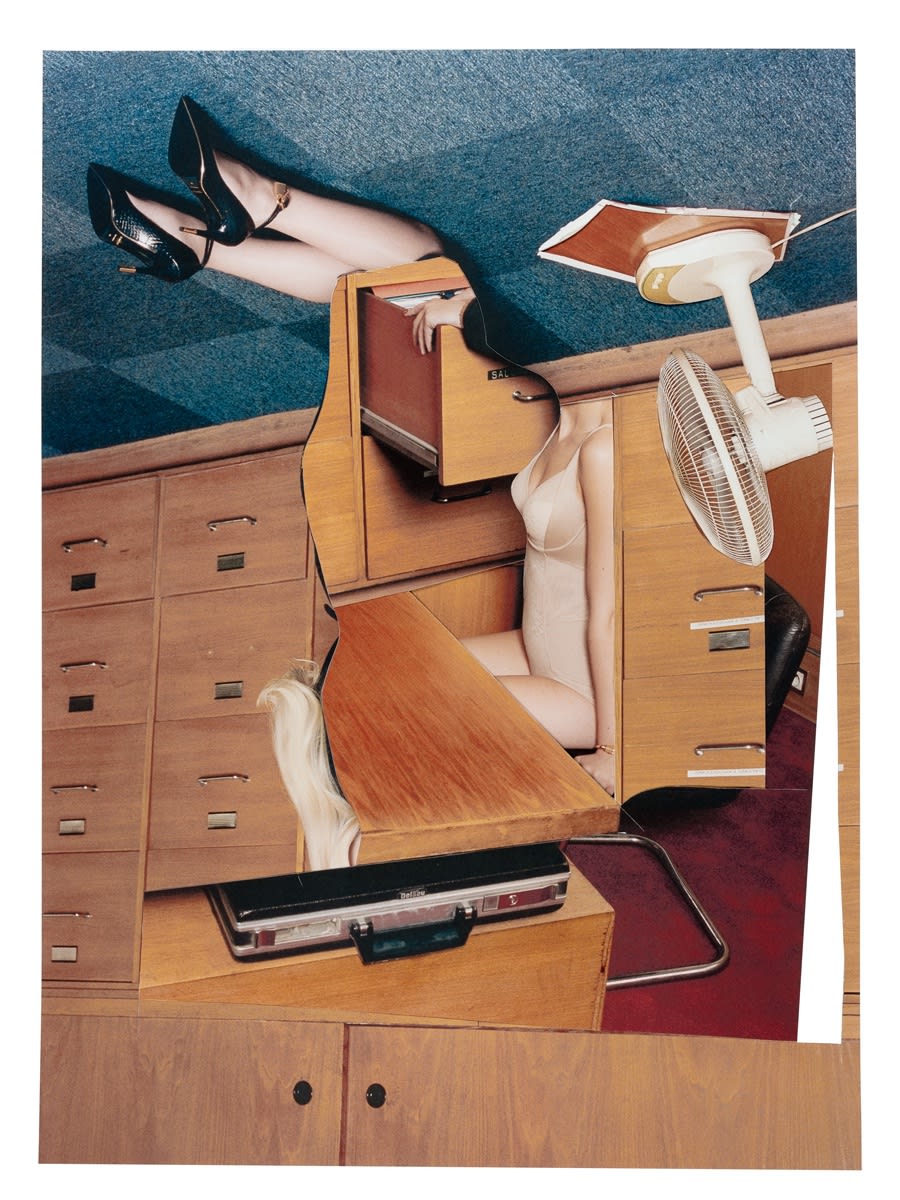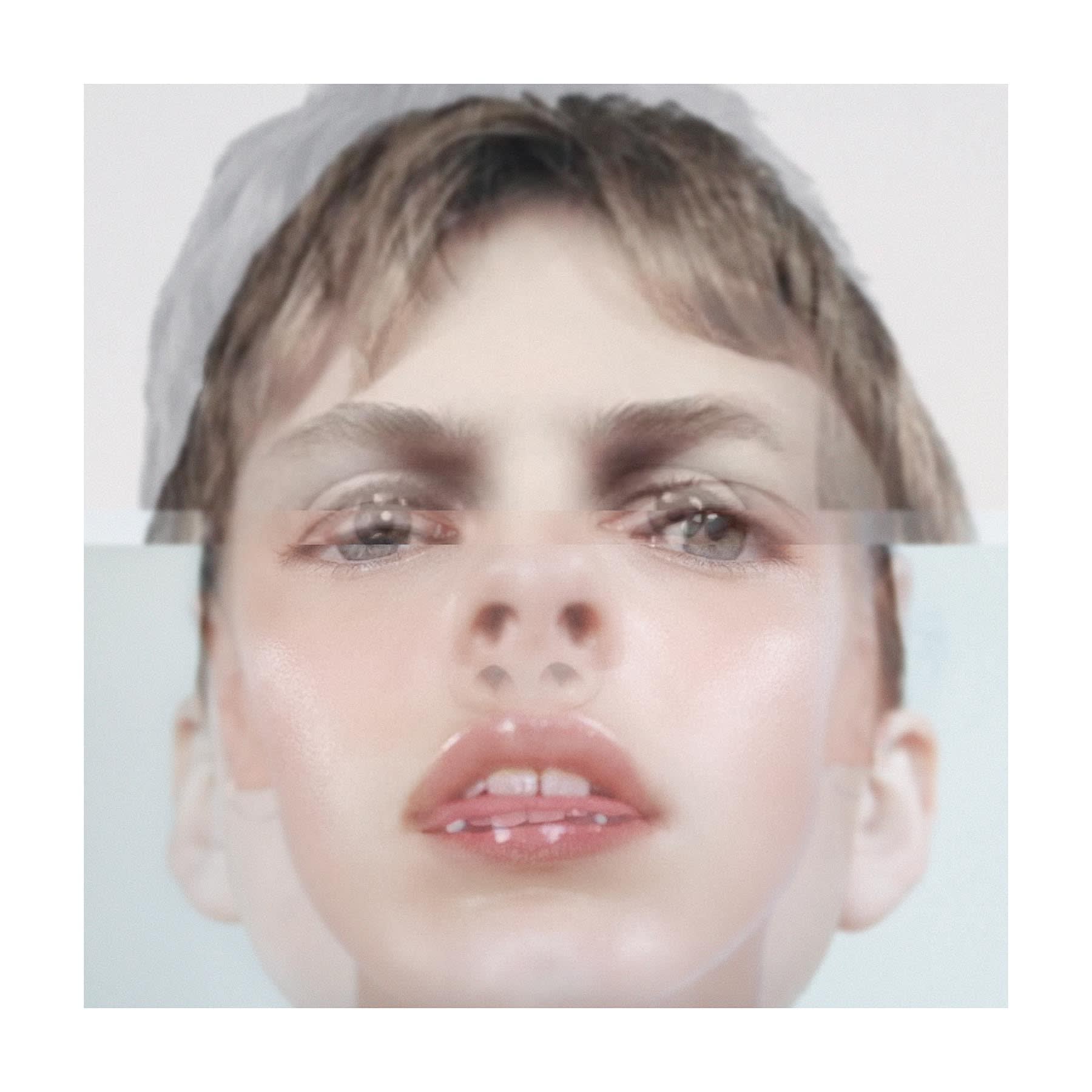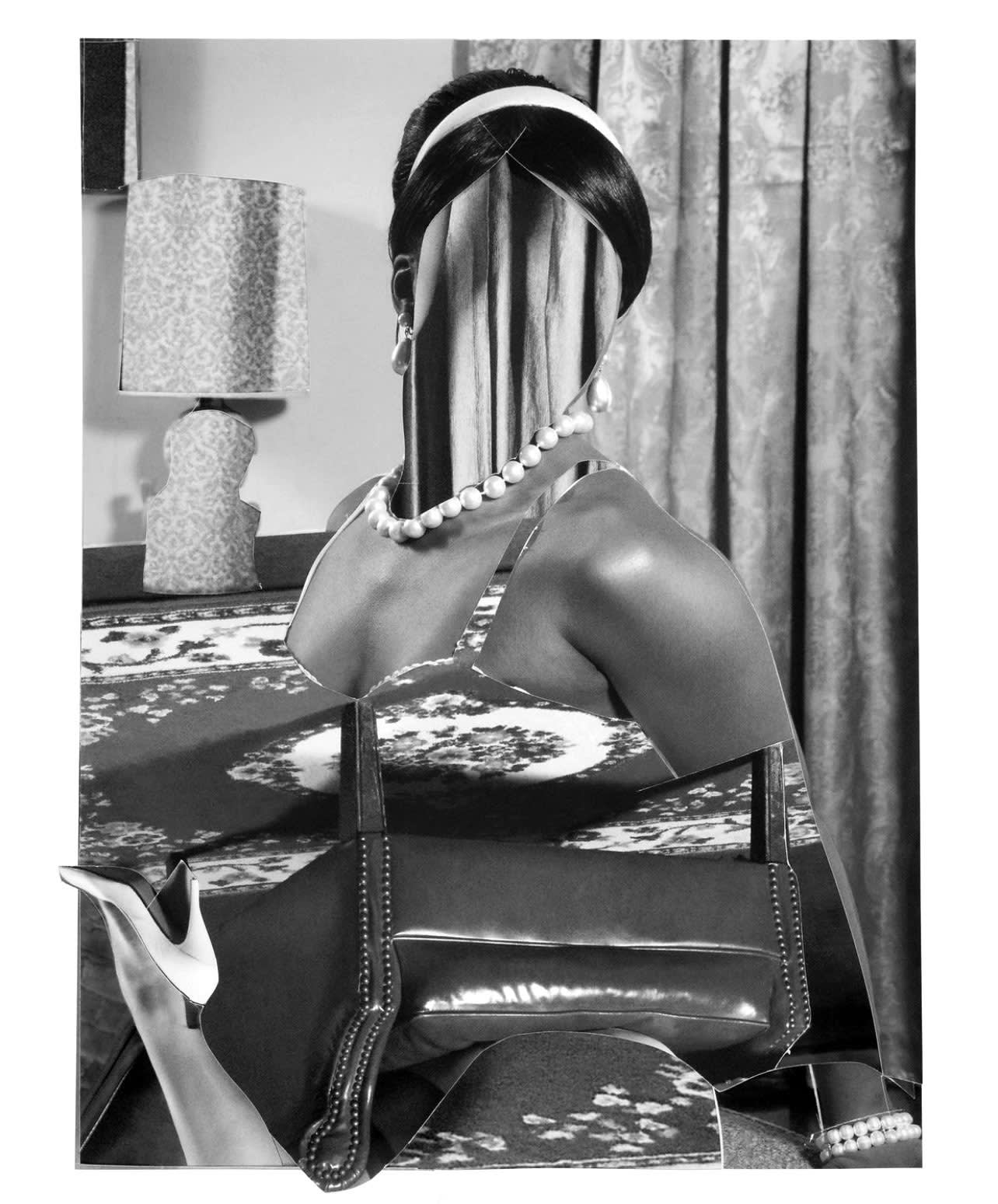Cut. Stitch. Splice. Stick. Re-cut. Layer. Re-layer. Re-photograph. Re-frame. Faceless features appear as faces disappear. Bodies intertwined and condensed in the surreal architecture of their surroundings, bounded by the limits of the frame. As chance entounters and displacements emerge, KYoung's collages disclose intricate yet unsettling images. They call to a suspended moment in space and time, between past and present, between truth and mounted representation, real, implied, or imagined - and to a new way of thinking on photography and image-making.
A lens-based artist born, raised and currently living in London, UK, KYoung holds longstanding interest in the photographic medium. Graduating from Central Saint Martins (UAL), London, their interdisciplinary graphic design course, weaving in semiotics and film theory, planted the roots for their reflection on visual communication, the appointment of forced narratives onto images, and the inception of meaning - conscious and unconscious, explicit and implied.

Females in Frames, 2021 © KYoung / courtesy The Ravestijn Gallery
Employing themself to breaking down anol escaping narratives, they sought inspiration from Dada, Surrealism and the work of writers like William Burroughs and Allen Ginsberg, leading them to explore chance and improvisation in their work - notably by referencing André Breton techniques including psychic automatism, spontaneous dictation of thought and action void of reason, control or concern towards shared morals or aesthetics.
"The pose of the figure or the staging of the object appeal to me more than the subjects themselves; it is the visual codes and conventions within the frame that interest me most." - KYoung

Filling Cabinet, 2019 © KYoung / courtesy The Ravestijn Gallery
KYoung quickly began collaging from appropriated photographic commonly found imagery, in second-hand books and magazines: the starting point for a process, now their distinct visual language, which they term re-photography. repeatedly Using scalpel, they cut, splice, position and assemble a palette of selected parts from these images sometimes extracted from their source and collected by the artist several months prior until the chance collisions feel instinctively right: when a new image appears, when the spliced layers reveal a space that lies between the former pictures, when the tension in the original image has in some way been displaced. Re-photographing the resulting collage, KYoung reprints it. In doing so, they return the pieces to their original materiality, bringing forth a new photograph that questions both what was constructed before and what is constructed now.
"I actively avoid conscious ideas ortenempoying chance strategies in my process. While no choice is an accident, I use an emotional rather than an intellectual response when I select, cut, or assemble my source material." - KYoung
Recalling John Stezaker's minimal yet highly suggestive interventions, Ellen Gallagher's visual language of recurring, multi-layered motifs, or the otherworldly compositions and perspectives of Man Ray, the photographic material reinvents itself, borrowing from its original credibility. As the original context is removed, new narratives emerge, materializing KYoung's unconscious thoughts - and unavoidably, their ever-present preconceptions.

Head no. 1, 2022 © KYoung / courtesy The Ravestijn Gallery
In the artist's seemingly objective selection and redistribution of found, rather than searched for, imagery, a hidden force appears to be at play, telling KYoung's own irrepressible truth. A dual suspension of disbelief surfaces. The first, pointing to the visual and social conventions that govern the original image, in the past. The second, revealing the implicit motivations behind the artist's creative process, In the present. Witness to a specific meaning and interpretation, the past image acts as a form of documentation, characteristic of a historical and geographical context, of a particular space and time. Yet, by re- photographing the collage, looking through the lens of the camera, KYoung enters a form of detachment. They become the viewer instead of the maker, and are able to read the unconscious cues, traces of their own internal thoughts and recurring ideas.
"I can see in hindsight that it is often the pose or gaze depicted in the original image that takes my attention, and that what I make relates back to my thoughts around gender politics, identity and sexuality, or that it taps into my long-held preoccupation with the overlaps of time and place." - KYoung
The queerness of the resulting images mirrors that of the bodies and faces that constitute them. Fragmented, barely discernible as they contort and dissolve in the clothes, furniture and spaces that surround them. Bodies and faces that are often female, young, models of a conventional beauty assigned to a different time. The rawness of their flesh constricted to the geometry of a floor, a ceiling, a curtain, chair, a shoe, the geometry of the photograph itself. Subtle and deeply political, KYoung deconstructs the images, the norms that govern the subject - a binary representation of the female body - and the object - the framing of that body within the photograph itself. Facing the works, viewers destaollised, confronted are with conventions apparently relinquished to the past; the unconsciously subjective arrangements made by the artist; and the impulses of their own interpretation. Images are cut. Compositions are stitched. Meanings are spliced. Interpretations are layered. And as the image is re-photographed, the truth is re-framed.

Figure with Leather Chair and Pearls, 2022 © KYoung / courtesy The Ravestijn Gallery

